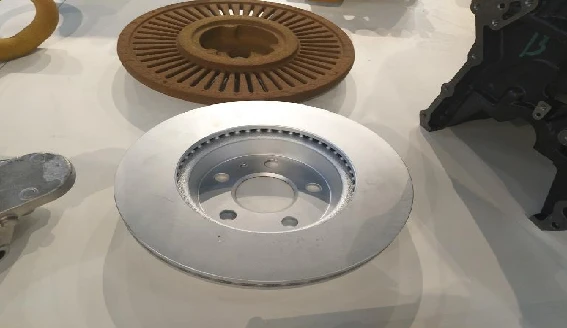Advantages of Sand Casting
Sand casting, one of the oldest and most widely used metal casting techniques, involves the use of sand as the mold material. This process has numerous advantages that make it a popular choice for various applications across different industries. In this article, we will explore the primary benefits of sand casting that contribute to its enduring popularity.
1. Cost-Effectiveness
One of the most significant advantages of sand casting is its cost-effectiveness. The materials required for sand casting, including sand, binders, and basic equipment, are relatively inexpensive compared to other casting methods. This makes it an attractive option for both small-scale and large-scale production. Additionally, the ability to reuse sand after the casting process reduces the overall costs associated with material procurement.
2. Versatility
Sand casting is highly versatile and can accommodate a wide range of materials, including aluminum, brass, iron, and steel. This versatility extends to the size and complexity of the components produced. Sand casting can create large and intricate shapes, making it suitable for various applications, from automotive parts to artistic sculptures. Manufacturers can produce both simple and complex designs, which is a significant advantage over more rigid casting methods.
3. Adaptability to Different Designs
The flexibility of sand casting allows for rapid prototyping and the production of custom designs. Since molds can be made quickly and adjusted easily, it is possible to create multiple iterations of a part without incurring substantial costs. This adaptability is particularly valuable in industries where innovative designs are continually developed and require frequent updates to components.
4. Good Surface Finish
While not as polished as other casting methods, sand casting can achieve a relatively good surface finish depending on the quality of the sand and the casting process used. With proper finishing techniques, such as machining and grinding, the surface quality can be enhanced to meet stringent specifications. This ability to achieve acceptable surface finishes makes sand casting suitable for functional parts that require a degree of aesthetics and precision.
advantages of sand casting

5. Excellent Dimensional Tolerance
Sand casting can produce parts with reasonable dimensional tolerances, particularly for larger components. The process allows for the control of various factors, such as cooling rates and sand properties, which can affect the final dimensions of the casting. In many cases, sand castings can meet the required tolerances for engineering applications without necessitating extensive rework.
6. Environmental Considerations
Modern sand casting practices incorporate environmentally friendly techniques. Many foundries recycle sand and use less toxic binders, reducing waste and minimizing environmental impact. The ability to reuse sand multiple times also contributes to sustainability, making sand casting a more eco-friendly option compared to some other casting processes that generate more waste.
7. Scalability
Sand casting is highly scalable. Whether a manufacturer needs a single prototype or thousands of units, the sand casting process can be adjusted accordingly. This scalability makes sand casting an ideal choice for both low-volume and high-volume production runs, allowing businesses to align their manufacturing processes with market demand without significant changes to the production setup.
8. Large Production Capacity
Sand casting is capable of producing large quantities of parts in a relatively short amount of time. This high production capacity is particularly beneficial for industries that require rapid delivery of components, such as automotive and aerospace. The ability to produce large casts in one go reduces lead times and improves overall operational efficiency.
Conclusion
In summary, sand casting offers a multitude of advantages that make it a preferred choice for many industries. From cost-effectiveness and versatility to adaptability, good surface finish, and scalability, the benefits of sand casting are significant. As manufacturing technologies evolve, the tradition of sand casting continues to thrive, proving to be an efficient method for producing complex metal components that meet modern engineering demands. Whether for prototyping or mass production, sand casting remains a reliable and effective solution in the world of manufacturing.
Post time:ធ្នូ . 13, 2024 18:27
Next:ceramic sanding discs
